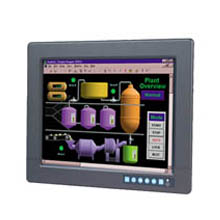ometimes projects come along that cause us to rethink everything. For me, this happened most recently when asked to consult on a model automation system for astronomical observatories. Once I’d gotten over the novelty of that peculiar application and learned more of its details, I realized it had more in common with our more typical industrial applications than not. But, at some point, I also realized that there may be no such thing as a “typical” application, and this awareness started when considering the human side of the human-machine interface or HMI equation.
Today’s typical astronomical observatory doesn’t look much like the mountain-top behemoths we’ve come to accept as defining the tools of modern astronomy. The multinational, multi-billion dollar facilities that sit atop cloud-piercing mountains of Arizona, Hawaii, Texas and Chile are the exceptions, not the rule. For every publicly funded Keck, VLT and LBT, there are hundreds of smaller, privately funded observatories, and because their staffing budgets are modest and locations so remote, automation is essential to their successful operation.
Modern telescopes serve as huge camera lenses mated to specialized digital cameras that are optimized for ultra-low light imaging. Most simply capture and record photons. The cameras, telescopes and telescope mounts function in a manner very similar to modern industrial robots. Indeed, industrial robotic arms have now been modified to carry and aim imaging telescopes, creating systems that have much in common with the machine-vision systems at use in factories worldwide.
Most private research observatories are installed at remote, high-desert sites where the atmosphere is thin, the air very dry and dust infiltrates everything. On some nights, dew is a challenge, too. Worse, many such sites are located well away from power grids. These are areas where daytime highs can be quite hot and nighttime lows are often very low. Because the telescopes and everything else in the observatory interiors must operate at ambient temperature, the control systems, including HMIs, must be able to withstand a wide range of temperature extremes.
 An HMI is needed within reach each telescope to confirm mechanical adjustments in alignment and reconfiguration of imaging components, and other HMIs are needed in the observatory’s “warm” room, if the operator is lucky enough to have such a room to escape too during extended imaging runs. Still other HMIs control the telescope systems via Internet connection.
An HMI is needed within reach each telescope to confirm mechanical adjustments in alignment and reconfiguration of imaging components, and other HMIs are needed in the observatory’s “warm” room, if the operator is lucky enough to have such a room to escape too during extended imaging runs. Still other HMIs control the telescope systems via Internet connection.
When working at the telescope in temperatures well below freezing, prudent operators wear gloves, and the colder it is, the thicker the gloves. This makes interaction with keyboards and mice clumsy and inefficient at such times. So, the optimum HMI solution for at-the-telescope control appears to be one that includes a touch interface that accommodates both finger and stylus input, making Advantech’s FPM-3121G is an ideal solution, because it offers:
- Storage temperatures of -22° to +176° and operating temperatures of -4° to +140°;
- An enhanced 5-wire resistive-touch sensor;
- An anti-reflective screen with tempered glass;
- Full enclosure ground isolation protection;
- Both VGA and DVI-D video ports;
- Low power consumption (+5 volts at 100 mA);
- IP65 water resistance (as noted, dew is also a frequent challenge in open observatories);
- Generous viewing angles; and
- Multiple mounting options to ensure a configuration that maximizes operator comfort.
That last factor, operator comfort, is obvious when the application requires manning an isolated telescope in freezing temperatures from dusk till dawn, but it’s a factor that should rank highest when planning any HMI configuration.
Of course, completing our client’s model observatory control system will entail additional HMIs, as well as PLCs and fieldbus I/O systems to serve the many sensors integrated into modern observatory systems. I’ll detail those in future installments as this project develops.













